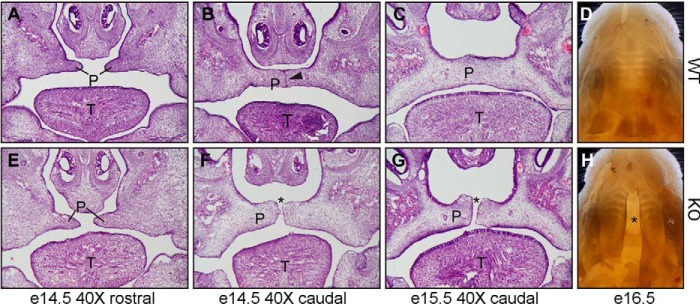Figure 1.
Ablation of GARP/Lrrc32 causes cleft palate in mice. A–H, H&E histological analysis (A–C and E–G) and whole-mount (D and H) of palatogenesis of wild-type (A–D) and GARP KO mice (E–H). Formation and elevation of the palatal shelf (P) are shown for both the wild-type (A) and KO (E) at the rostral region of E14.5 embryos. A midline epithelial seam is seen in the WT palate (B, arrowhead) but absent from GARP KO mice (F, asterisk). From E15.5 to E16.5 embryos, palatal fusion is completed throughout the entire palate in the wild type (C and D) but not observed in the mutant (G and H). Instead, a large gap can be seen in GARP mutants (asterisk), demonstrating a cleft palate phenotype. T, tongue.

